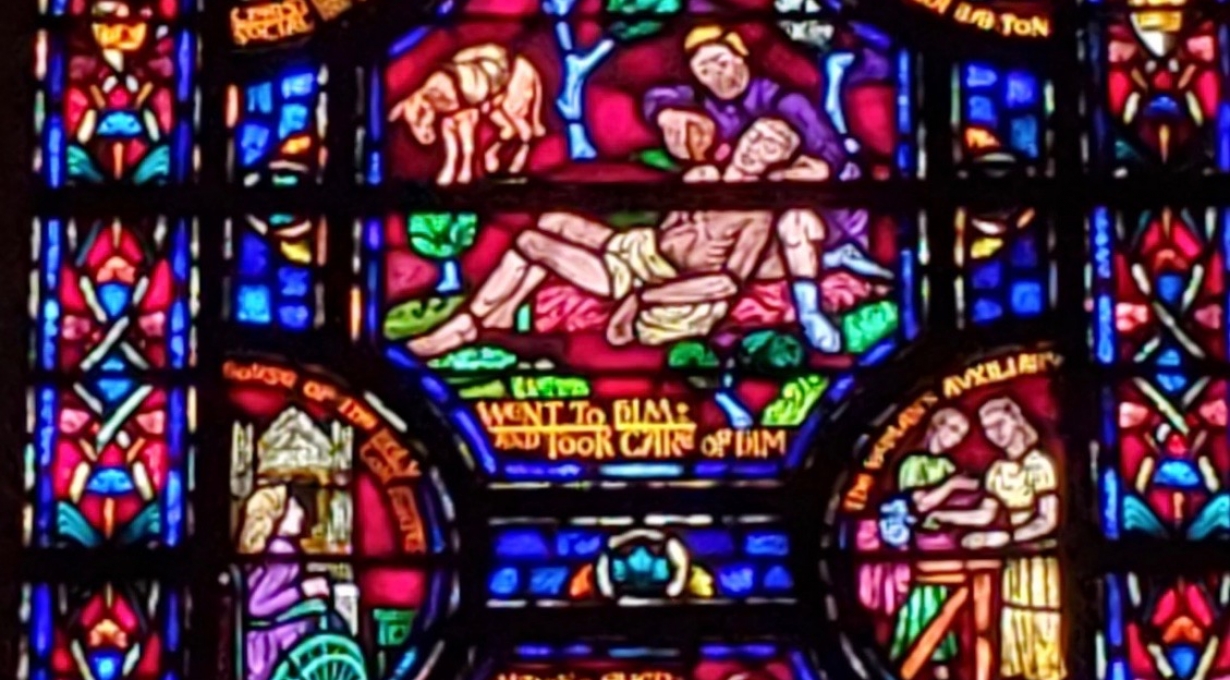#MuseumFromHome: Celebrating the ADA at 30

The Cathedral of St. John the Divine often showcases its mission through its stained-glass windows. As a “house of prayer for all people,” there a surprisingly great amount of diversity represented for a building begun in 1892. In the All Souls Bay, the major stories refer to people helping neighbors who might not know each other like in the Good Samaritan parable. The smaller images are of more modern tales. From Clara Barton founding the American Red Cross to community efforts at Ellis Island to welcome immigrants, there are a variety of groups represented who might benefit from some neighborly help.
One lesser known story from this window is that of the House of the Holy Comforter, symbolized by a woman using a wheelchair in the lower left corner. Began in 1897 by an Episcopal nun, the House of the Holy Comforter was the only free nursing home in New York City at that time. The institution was progressive by contemporary standards with a mission to provide care for physical and spiritual needs. Although now under a different name, it became an assisted living community.
During the first part of the 20th century, doctors operated on the assumption that that people with disabilities needed protection and therefore isolation from society via custodial institutions. The idea of promoting productivity and independence did not exist yet, and many people were neglected or abused. After the First World War, many veterans sought rehabilitation and a return to the workforce, which fueled legislation for welfare and support programs instead of institutionalization.
Throughout the rest of the 20th century, developments in medical technology, vaccines, and the beginnings of the rehabilitation profession allowed people with disabilities to join the workforce and become more visible to the general public. The modern disability rights movement, influenced by the Civil Rights Movement of the 1960s, sprang from humanizing individuals with disabilities as productive members of society who were employable and deserved equality. By singing the Americans with Disabilities Act into law during the 100th Congress in 1990, President George H.W. Bush signed expanded the original 1973 Rehabilitation Act to prevent discrimination against people with disabilities in all employment, education, transportation, and access to public buildings.
As we strive for equality for all Americans, the Cathedral hopes that laws like this one will ensure that no ability be wasted and everyone is welcome to participate in life as fully as possible.